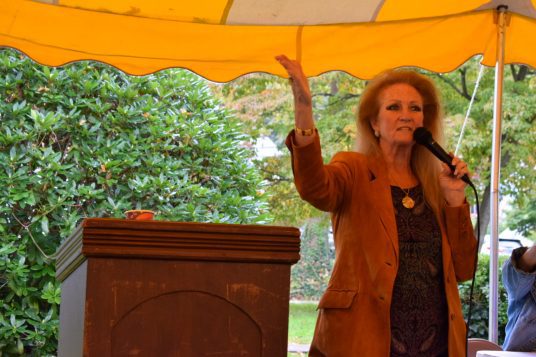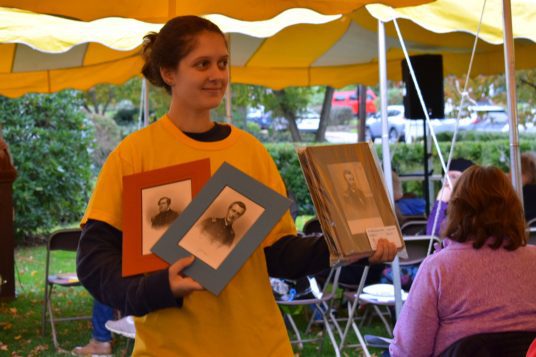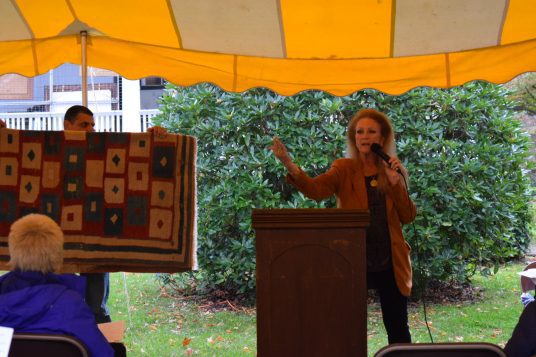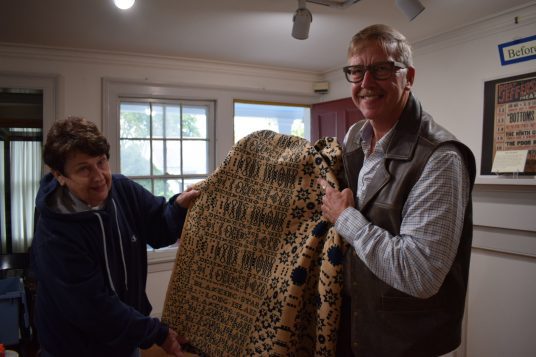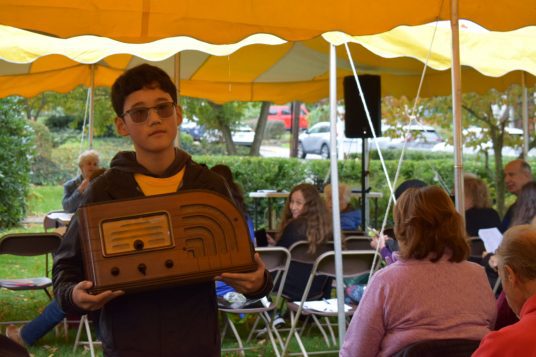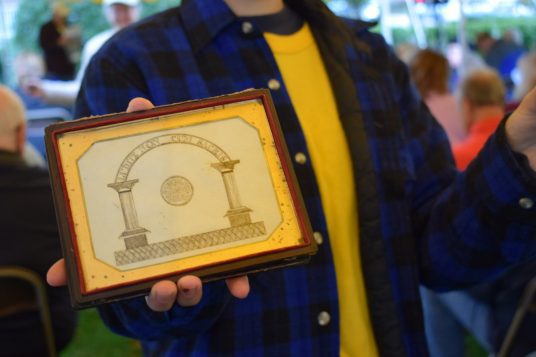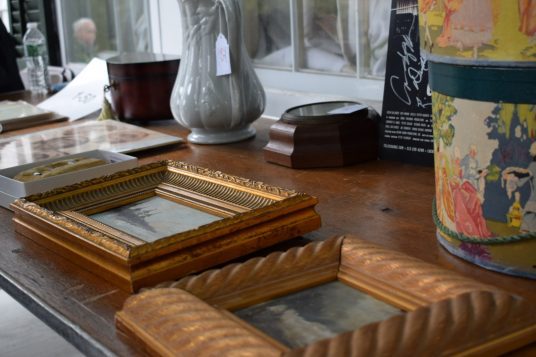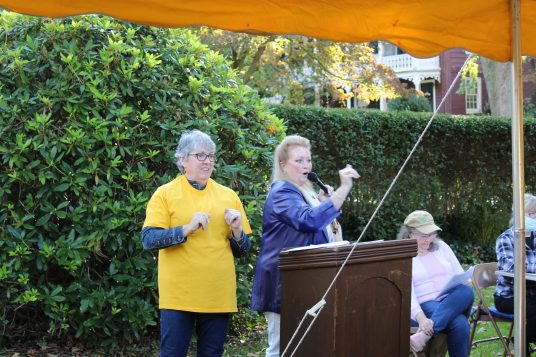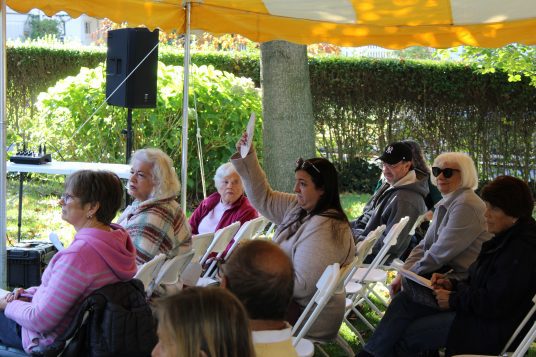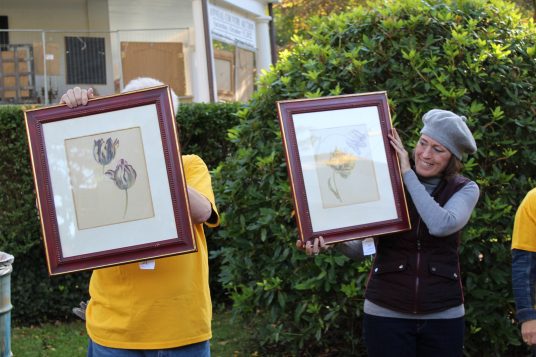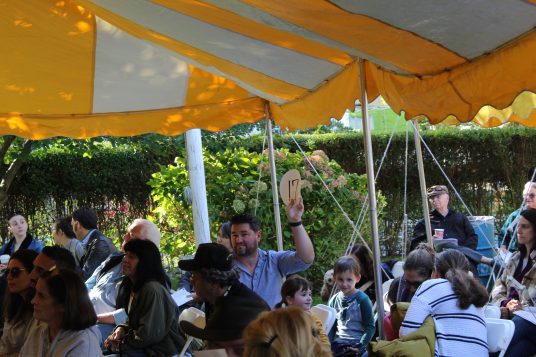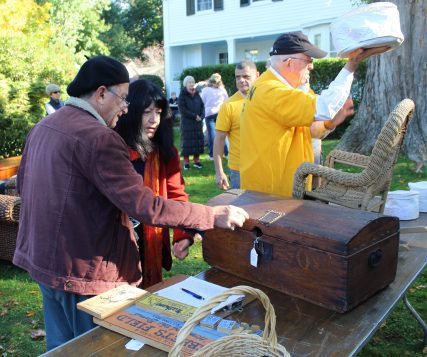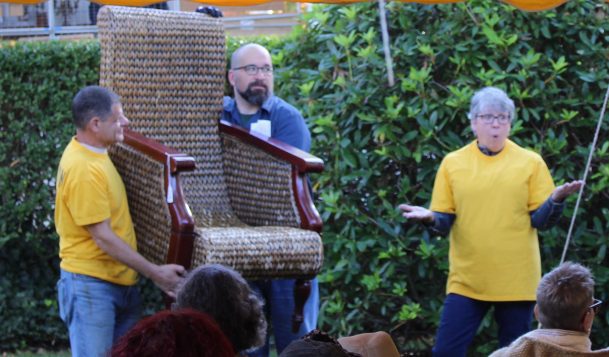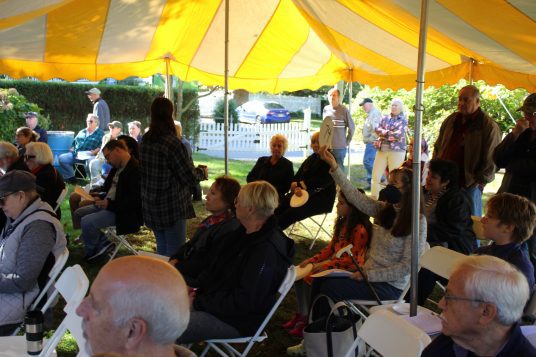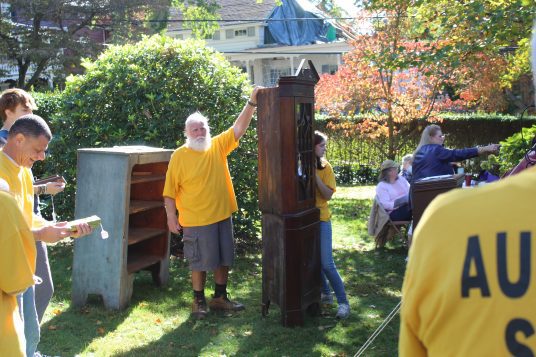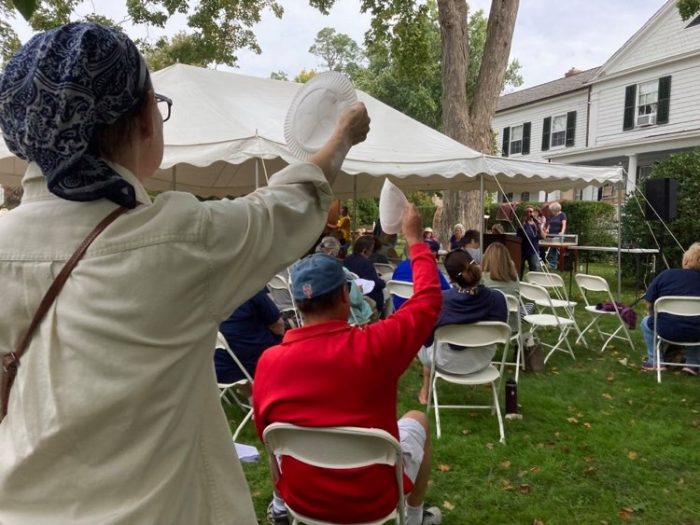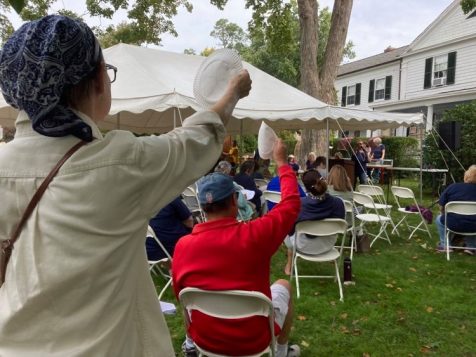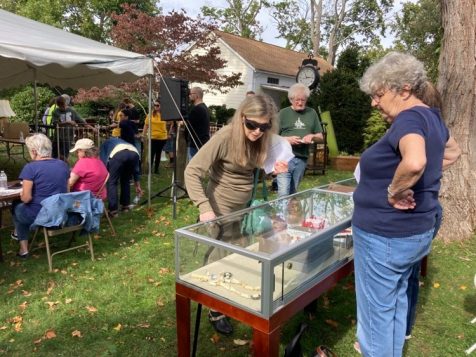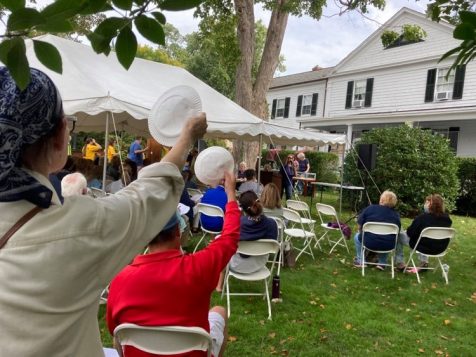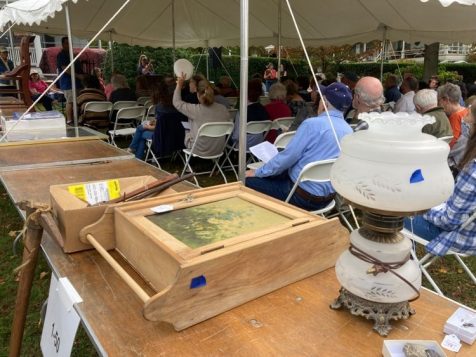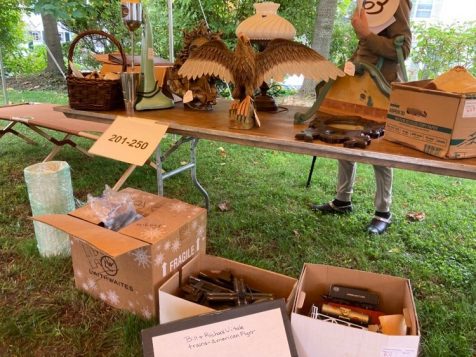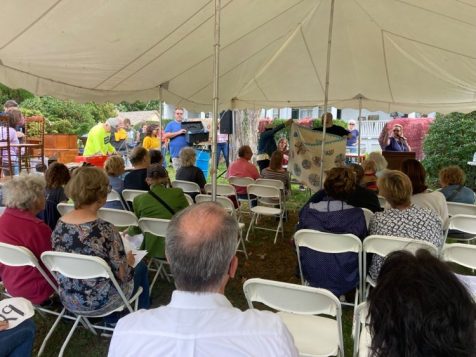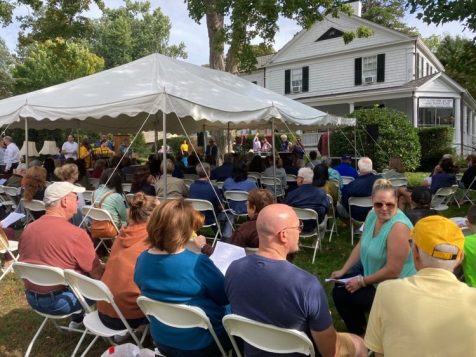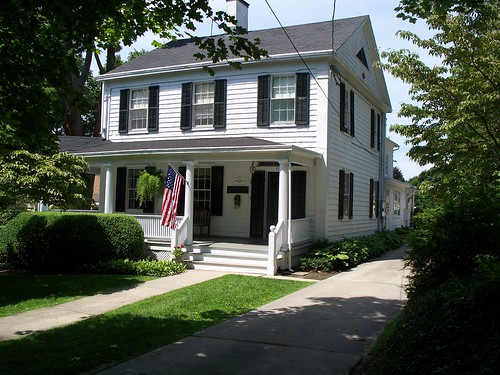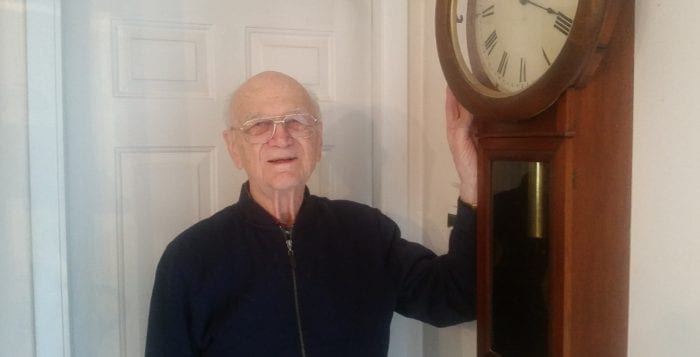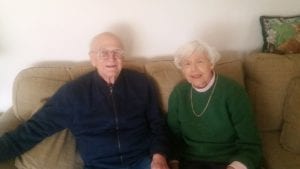Torrential downpours didn’t stop people from heading into Port Jefferson this past weekend to get a head start on the village’s annual autumn activities.
The 35th annual Outdoor Country Auction at the Mather House Museum was held Saturday, Oct. 14, under a tent with plastic covering up the antiques for sale. The muddy grass and gloomy skies didn’t prevent nearly three dozen people from sitting with their paddles, bidding on goods dating back to the 1800s that would help support the Historical Society of Greater Port Jefferson.
Nick Acampora, president of the historical society, said that this year, the organization made approximately $5,000 — one of the largest in recent years.
But what got most people talking throughout the event was one man in the fourth row who bid on a Setauket coverlet over and over, essentially spending $1,600 on a large piece of fabric. After a large round of applause, and another purchase of locally made antiques dating back to 19th century Setauket, other shoppers were dying to know why someone would spend that much on a few antiques.
Michael O’Dwyer, a board member of the Three Village Historical Society, said that the 1815 woven coverlet was once owned by Frances Satterly — a significant family in the Three Village area.
“It’s a piece of local history,” he said. “We’re so happy that it will go back to the village historical society.”
Along with the coverlet, O’Dwyer purchased several other local antiques, out of the nearly 250 items up for bid, that will soon be housed with other historical pieces accumulated through the years.
“Events like this are emblematic of Port Jefferson’s small-town charm, strong community and rich history,” said Deputy Mayor Rebecca Kassay, who also indulged in a few items. “Even the rain couldn’t keep excited bidders from raising their paddles and raising funds for the historical society.”
As one side of the village was buzzing with auction bidders, other fun events were going on including an alumni softball game and, of course, the high school football Homecoming.
Several fifth graders decided to open up shop in front of these events, selling homemade bracelets, cookies and muffins to raise funds for fifth-grade events.
Lily Bowman, one of the young entrepreneurs, said that after the day’s events, the group made over $400.
“It was an exhausting day, but in a good way,” she said.

